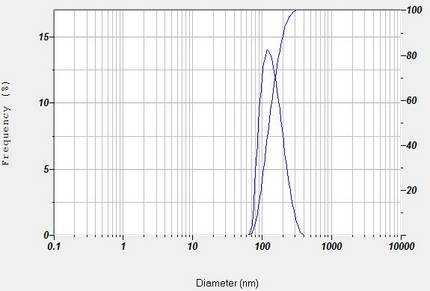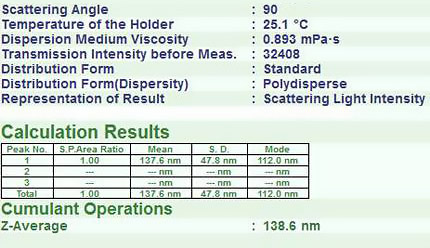

Liposomes are bilayer vesicles made of phospholipids derived from natural or man-made materials. They are mainly used in the pharmaceutical field for treatment of cancers as carriers of chemotherapeutic drugs to the tumor area. The amount of drug loaded into the liposomes and the size of the liposomes play pivotal roles in the pharmacokinetic and pharmacodynamic parameters of the drug. Hence accurate and rapid measurement of the size of liposomes is essential for novel and effective drug delivery systems.
When these phospholipids are introduced into an aqueous medium, they self assemble into bilayer vesicles with the polar ends facing the aqueous medium and non-polar ends forming a bilayer as shown below. The size scale of liposomes varies, but a mean size near 100 nm is quite typical.
A small volume of liposome sample was purchased for analysis. The small volume necessitated using the 50 µL disposable microcell for particle size analysis. The measurement was made with the SZ-100V2 Nanoparticle Size Analyzer at the 90 degree sizing detector for 120 seconds. The reported Z-Average particle size was 138.6 nm. A typical result is shown below.

Particle size distribution for a liposomal material as measured by the SZ-100.

Particle size results for the liposome.
The HORIBA SZ-100 Nanoparticle Size Analyzer can measure the size of liposomes quickly and easily. Additionally, the SZ-100 can measure the zeta potential and molecular weight of these materials.
Nanoparticle Analyzer
У вас есть вопросы или пожелания? Используйте эту форму, чтобы связаться с нашими специалистами.